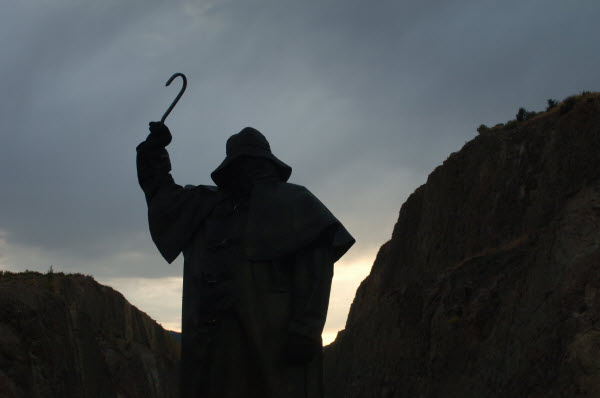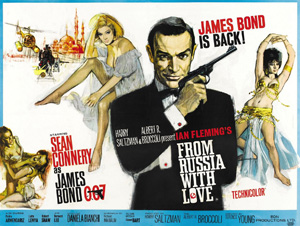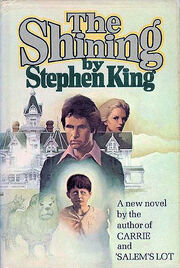If you are interested in teenagers, you will print this story. I don't know whether it's true or not, but it doesn't matter because it served its purpose on me.
A fellow and his date pulled into their favorite "lovers' lane" to listen to the radio and do a little necking. The music was interrupted by an announcer who said there was an escaped convict in the area who had served time for rape and robbery. He was described as having a hook instead of a right hand. The couple became frightened and drove away. When the boy took his girl home, he went around to open the car door for her. Then he saw — a hook on the door handle! I don't think I will ever park to make out as long as I live. I hope this does the same for other kids.
Letter to Dear Abby
November 8, 1960
November 8, 1960
There is something about October. It’s in the wind; it’s in the rustling dead leaves; it’s in the flames of the backyard fire. Shorter days. Longer nights. The growing compulsion to retreat to the indoors, away from the lengthening shadows. It’s a time when the outside world -- our warm summer friend just scant weeks back -- turns a mercurial cold shoulder and casts a narrowed and appraising eye our way, a warning dare of things to come. Is it any wonder that October is the time of Halloween?
And, once we are safely hunkered down inside, October is also a time to spit into the wind, to tempt fate. We are safe -- so let’s spin some tales about those who are not. It’s a time to tell stories aimed at only one thing -- raising the hackles on the listeners’ necks. Proving that, despite all of that civilization and infrastructure, despite the safety of our living rooms, we can still be reduced in a few hundred words to primordial horripilating fear.
“Ghost stories” are often set in the distant past. They therefore are safely embedded in another time. In this way, when we tell them, we insulate ourselves a little from the fear. This was frightening, this was horrible, but this did not happen here. It didn’t happen now. It is perhaps as a reponse to this historical distancing that a new genre of modern day horror stories evolved in the 1950s and 1960s. Popularly, these tales are often referred to as “urban legends,” a phrase that, according to The Oxford Dictionary, was coined in or around 1968. In a sense the term is a misnomer, since many of these frightening, and often cautionary, tales do not share an “urban” setting. For that reason sociologists and social historians prefer the term “contemporary legend.”
These legends, urban or contemporary, typically follow similar, and fairly constrained, narrative approaches.
First, they are short. They can be told easily at a sitting. They are, in other words, “campfire length.”
Second, invariably the stories are told as something that happened to someone two times removed from the narrator -- typically to “a friend of a friend,” popularly abbreviated FOAF. This narrative device provides just enough proximity to make the story seem “real” while also providing just enough distance to ensure that the narrator need not (and cannot) personally vouch for the truthfulness of the tale. We are told to accept the truth of the legend as an article of faith.
And third, in each legend all of this contributes to a frightening theme: These are “common-man” stories. The terror that is their backbone could have happened to anyone. As we listen we shudder in fear because we know what this means: this could have happened to us.
| Professor Jan Brunvand |
While urban legends evolve by word of mouth (and now via the internet), and change through the re-telling, it is often possible to trace particular legends back to their origins. As an example, according to Professor Brunvand the many variants of “The Hook” -- that story that found its way into that 1960 Dear Abby letter quoted above -- likely derived from a series of lovers’ lane murders that were committed around Lake Texarkana in 1946. There is no evidence that those murders had anything to do with a hook. That came later. Beginning with a foundation in reality the stories grow, they gain embellishment, much as prose changes when whispered ear to ear in that birthday party game we all played as children. Part of that growth was the addition of the hook.
Often the common denominator of a particular urban legend, as Professor Brunvand teaches us, is a locale, invariably one that is frightening by its very nature, or that is linked historically to a crime, to a disaster, or to reported supernatural occurrences. Such spots are by their nature fertile fields for the cultivation of urban myths. And, since they can also be visited, they have spawned their own participatory variant on the urban legend -- urban tripping. Why sit and listen when we can go there -- when we can go there at night?
Often the common denominator of a particular urban legend, as Professor Brunvand teaches us, is a locale, invariably one that is frightening by its very nature, or that is linked historically to a crime, to a disaster, or to reported supernatural occurrences. Such spots are by their nature fertile fields for the cultivation of urban myths. And, since they can also be visited, they have spawned their own participatory variant on the urban legend -- urban tripping. Why sit and listen when we can go there -- when we can go there at night?
 |
| The Pope Lick Trestle |
In Louisville, Kentucky you may want to visit the Pope Lick Trestle, the reputed home to the Pope Lick Monster, described as a human-goat hybrid. The monster (as the legend goes) escaped from a carnival where it (of course) had been cruelly mistreated. It now seeks revenge, and its vengeance is focused on any unsuspecting person who wanders (at night, of course) too near.
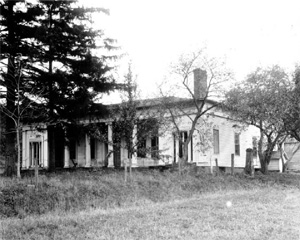 |
| The Swift Mansion |
In Cleveland, Ohio why not visit the site of the Swift Mansion? According to locals the mansion was once the Gore Orphanage, where (again, as the legend goes) numerous children were killed by the staff, either murdered or allowed to die of malnutrition and neglect. Historians dispute whether the mansion ever, in fact, was an orphanage. But don't let that dissuade you -- it hasn't stopped the stories about those children. And they, too, are out for revenge.
| A depiction of the Jersey Devil |
 |
| The Bunny Man Bridge |
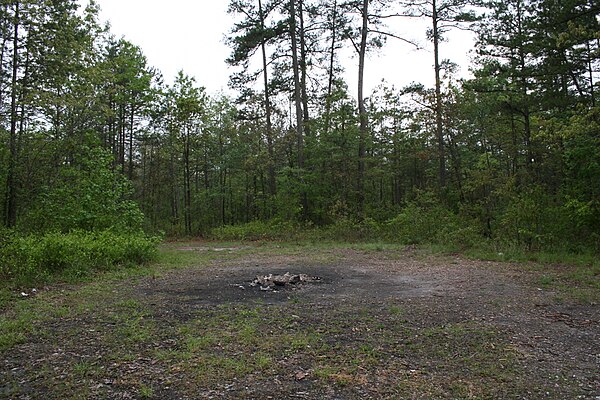 |
| The Devil's Tramping Ground |
| Old Alton Bridge |
And what trip to Vincennes, Indiana (my wife’s hometown) would be complete without a visit to the legendary Old Purple Head Bridge spanning the Wabash River? The bridge, believe it or not, is still open to vehicular traffic, a fact I know all too well, as previously recounted. (A longer piece on Old Purple Head, and the legends it has spawned, was the subject of a Halloween piece several years back.)
| Old Purple Head |
For a price, of course.
For those on the west coast perhaps nothing can beat the Winchester Mystery House. This 116 room mansion, which has been termed the creepiest house in Silicone Valley, was built by Sarah Winchester, the slightly deranged widow and heir to the Winchester rifle fortune. Reportedly, there was never an overall design for the Winchester Mystery House, or even an architect. The mansion, instead, is a bizarre and immense congeries of rooms built to the whims of Sarah herself. Rooms were added daily or weekly, inspired by Sarah's own nightmares and warnings from her medium concerning how to best construct the house so as to allude supernatural spirits from following Sarah as she moved from room to room.
The resulting mansion was continuously under construction for over thirty years, right up to the day of Sarah's death. It has been described as “a 6-acre labyrinth of false doors and stairs that lead absolutely nowhere – ad-hoc additions reportedly made by Winchester to confuse the evil spirits of people shot and killed by the firearms of her dead husband's namesake.” Tours are available daily, but special flashlight tours -- so-called “Fright Nights” -- are conducted at night every Friday the 13th and regularly throughout the month of (you guessed it) October.
The resulting mansion was continuously under construction for over thirty years, right up to the day of Sarah's death. It has been described as “a 6-acre labyrinth of false doors and stairs that lead absolutely nowhere – ad-hoc additions reportedly made by Winchester to confuse the evil spirits of people shot and killed by the firearms of her dead husband's namesake.” Tours are available daily, but special flashlight tours -- so-called “Fright Nights” -- are conducted at night every Friday the 13th and regularly throughout the month of (you guessed it) October.
 |
| The Trans-Allegheny Lunatic Asylum |
The hospital has a daily schedule of tours, but what you will want (I know you) is the overnight tour. Here is the description offered on the asylum’s website:
Ever thought about spending the night in a haunted Lunatic Asylum? Our Ghost Hunts last from 9:00 p.m. to 5:00 a.m. . . . . After everyone is registered and divided into groups, guides will assist you in your exploration of this massive Gothic asylum. After a brief paranormal tour you may either hunt alone or with our experienced ghost hunting guides. Our guides are here to ensure that you have a positive and safe evening. Make sure to bring your camera, digital recorder, EMF meter . . . .
I have not taken this tour, but I certainly understand why payment is required in advance. The most popular time to experience the asylum? October, of course. October at night.
The legends and sites discussed above -- only a few of those that are out there -- share a thread common to most "ghostly" encounters: Actual evidence of supernatural happenings is available only in wisps and shreds. And the psychic experiences associated with each are all potentially explainable – over active imaginations, stimulation brought on by atmospherics, coincidences that align just so. All of this is expected, after all, when we choose to view the surroundings through the shadows of midnight. Particularly midnights in October. But, in any event, solid evidence of an actual haunting is generally pretty hard to come by.
But not always.
There is a stretch of road in Southern England that for centuries has been the site of reported supernatural occurrences. Horseback riders and carriages traveling through the countryside over two hundred years ago avoided this stretch of road not just because of some inexplicale sightings, but also because horses simply refused to travel the road. They would grow increasingly agitated and then bolt if spurred to continue. Travelers who did brave the road at night sometimes failed to reach their destination and, indeed, sometimes were never heard from again.
More recently some drivers have reported that as they steer around a particular “s” turn in what now is a paved road, a flickering figure can, at times, be discerned hovering in front of their car. Eventually, in an attempt to prove that something might, after all, be out there, a team of investigative reporters from the BBC set up a camera on a hillside overlooking the turn. The camera automatically recorded many cars rounding the curve over a stretch of weeks. Not surprisingly, for days the camera recorded nothing out of the ordinary.
Nothing that is until the clip below was filmed.
Even then the investigators were not certain that anything ghostly had been captured on their film. They began to change their opinion when they were able to carefully view what they had filmed back in the BBC studios. This is the clip that convinced them that something really might be there. Watch very carefully, or you may miss it. Pay particular attention to the area right in front of that car as it rounds that final turn.
More recently some drivers have reported that as they steer around a particular “s” turn in what now is a paved road, a flickering figure can, at times, be discerned hovering in front of their car. Eventually, in an attempt to prove that something might, after all, be out there, a team of investigative reporters from the BBC set up a camera on a hillside overlooking the turn. The camera automatically recorded many cars rounding the curve over a stretch of weeks. Not surprisingly, for days the camera recorded nothing out of the ordinary.
Nothing that is until the clip below was filmed.
Even then the investigators were not certain that anything ghostly had been captured on their film. They began to change their opinion when they were able to carefully view what they had filmed back in the BBC studios. This is the clip that convinced them that something really might be there. Watch very carefully, or you may miss it. Pay particular attention to the area right in front of that car as it rounds that final turn.
{
{
{
{
{
{
{
{
. . . four, five, six, seven, eight, nine, ten. Okay. Deep breath.
Some of you will recognize that clip from an article I posted this same October week several years back. Sorry about that! I couldn't resist trotting it out for one more spin. It’s always fun to offer up one's own re-telling of an urban legend long about this time of year. And, as the clip shows, you never know when you might trip on one right there on your own laptop!
